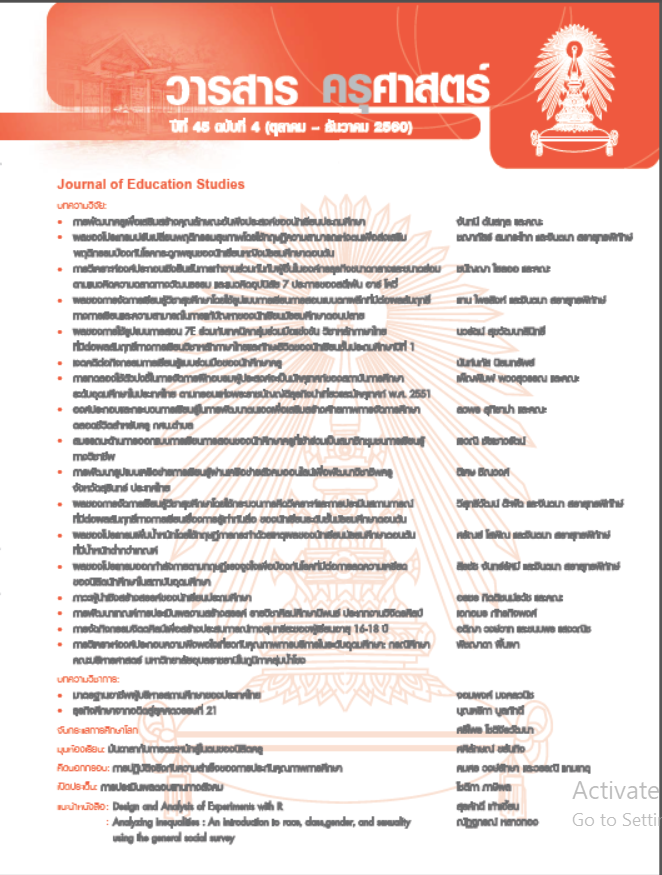การจัดกิจกรรมจิตตศิลป์เพื่อสร้างประสบการณ์ทางสุนทรียะของผู้เรียนอายุ 16-18 ปี
Abstract
Contemplative Art can help learners understand the meaning and value of art and open a worldview about themselves and others. The activity can be practiced at any age. For the children aged 16-18, creating aesthetic experience is the foundation of positivity to prepare them for further education and the becoming of citizen of the world. The purpose of this article is to present guidelines for contemplative art activity in 6 aspects; 1) The objective of the activity is to allow learners to associate internal and external experience that reflect the thought about themselves and their aptitude in the creation of various kinds of art; 2) The framework of the activity is to develop content using Bhavana 4 (4 principles of development) to allow learners to appreciate aesthetic sense of art; 3) The details of the activity are involved in the practice guidelines including duration, supplies, and equipment; 4) The method includes the example of appropriate words in various situations; 5) The evaluation is done by thought reflection through sketchbook; 6) The self-learning activities sites. When measuring the aesthetic experience of the students, it is found that all students have a higher level of aesthetic experience. A total of 9 students achieved aesthetic experience in the individualized level, which is the highest level, while a total of 5 students achieved the aesthetic experience in the modelized level




